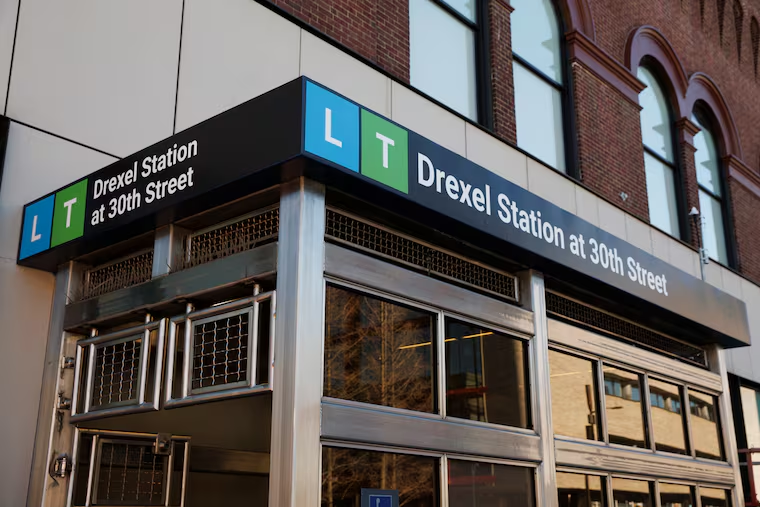SEPTA’s first signs of ‘Metro’ rebranding have arrived
SEPTA can be confusing, even to native users. New signs at Drexel Station are part of an effort to fix that.

SEPTA’s systemic simplification of signs, maps, and other wayfinding symbols, has made an early debut in the wild.
Crisp lettering and color-coded badges pop into view a block or two away from Drexel Station at 30th Street entrances, alerting travelers where to catch the Market-Frankford El (denoted by a blue L) or a trolley (a green T).
The signs went up over the weekend, and people quickly noticed.
“It was very conspicuous,” said Lex Powers, director of service information design for SEPTA. “We’ve gotten good feedback on how they look and how visible they are from far away. It’s been great to see that working in the real world.”
SEPTA had an opportunity to try its new approach in University City because Drexel University recently reached a naming-rights deal for the busy station, which construction crews are renovating.
For several years, SEPTA has been redesigning its ways of conveying information to the public via its website and app, station signage, system maps, and clear notices of bus route detours and service interruptions, posted at bus stops.
“People need to understand it visually to be able to figure out where they’re supposed to go,” said Katie Monroe, SEPTA’s project manager for service disruption communications. “We know it’s a pain point for riders.”
Her team started using the approach with last year’s Broad Street Run and continued with parades and other large events. Recently, they alerted people to longer-term route changes connected to the I-95 cap project in Old City.
The aim is to make a sprawling transit system of disparate parts easier to navigate for as many people as possible.
“We recognize the importance of folks feeling confident in their ride and empowering them with the information they need,” said Will Herzog, a project leader in information design who’s working on wayfinding.
Simpler logos and consistent, less cluttered signage and maps help orient immigrants and visitors to the city with limited or no English proficiency, people with disabilities, and those with strollers and packages looking for accessible entrances and exits. Even long-term customers making an unfamiliar trip.
There’s also an element of helping riders feel safer amid fears of crime and disorder on transit, Herzog and Powers said.
“We want to make sure that … these amazing resources, this transit network, is unmissable … we’re also treating it like it’s the front door to our city, not the back door,” Powers said.
SEPTA’s new naming system
SEPTA Metro: the umbrella term for SEPTA’s subway, elevated, and trolley lines
L: Market-Frankford Line
B: Broad Street Line
T: Subway-surface trolleys
M: Norristown High Speed line
D: Media-Sharon Hill Line